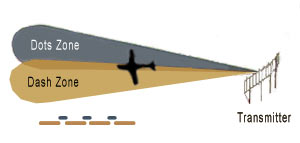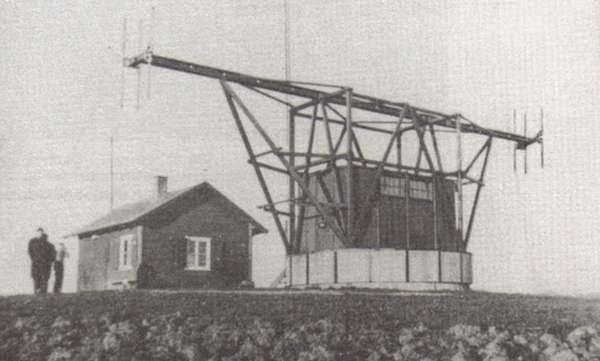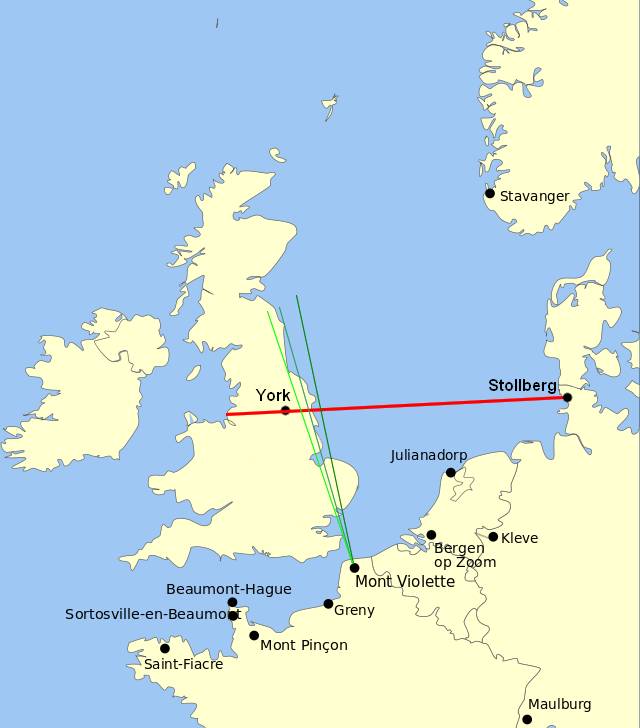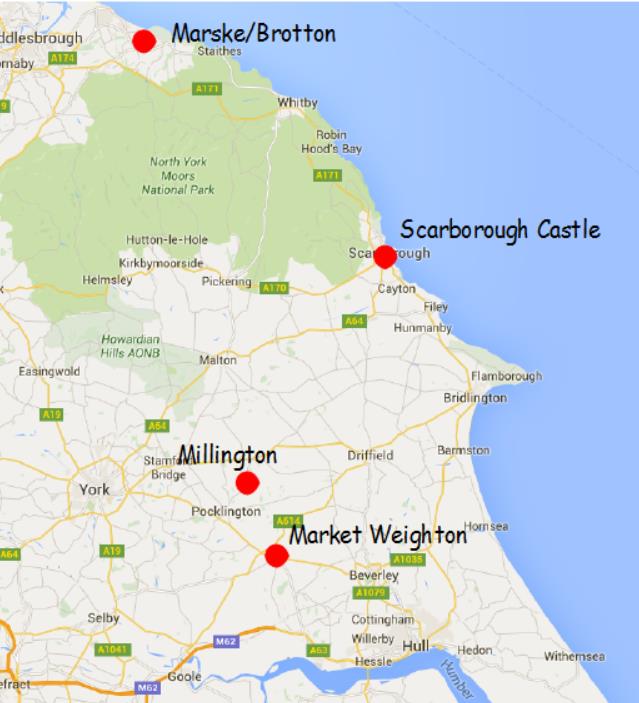Target Locating
In 1942, by the time of the Baedeker Raids, the use of radio navigation systems by the Germans was in a state of some disarray.
By September 1940, the Knickebein (the modification of an existing blind landing system) had been neutralised when effective countermeasures were put in place.

Knickebein......when the bomber was flying on the correct path, the dots and dashes would combine to produce a continuous tone.
Image credit: World War 2 Headquarters.
However, recorded German PoW conversations indicated that another system called X-Verfahren was being developed.
The British gave this system the codename "Ruffian" and developed jamming transmitters known as "Bromides".
The X-Verfahren was used for the massive raid on Coventry in November 1940 where, unfortunately, the "Bromides" were slightly off frequency and failed to confuse the attackers.

An X-Verfahren main beam transmitter (photo credit: source unknown)
By January 1941 with more and improved jamming equipment, X-Verfahren was defeated. However, the X-Verfahren transmitters were kept in operation to act as decoys and disguise the true intention of Luftwaffe targets and the Germans continued working on a modified version which was introduced by April 1942.
The Luftwaffe also had a third system in place called Y-Verfahren ......codenamed "Benito" by the British. Unlike the X-Verfahren which needed two transmitters, the Y-Vefrahren needed only one.
The Y-Verfahren had the German codename "Wotan".......the one eyed God. This led British Intelligence to surmise that only one transmitter was required. This supposition was correct but, confusingly, Y-Verfahren was actually codenamed Wotan2 and the X-Verfahren (which required two transmitters) was actually codenamed Wotan1.
The units KG100 specialised in the use of the X-Verfahren and KG26 in the Y-Verfahren (see Participating Units).

A Y-Verfahren (Wotan 2) transmitter (photo credit: source unknown)
British Intelligence was in a difficult position as it knew all about the German systems and developments thanks to Ultra (the intelligence gained from breaking the Enigma codes at Bletchley Park) and a countermeasure which interfered with the Y-Verfahren was in place by February 1941. To protect this source of intelligence it was agreed that the British counter measure would be used with gradually increasing power so that the Luftwaffe would not be aware that their system as compromised.

The BBC transmitter at Alexander Palace was used in conjunction with other ground stations to interfere with the Y-Verfahren.
The upgraded system X-Verfahren was in use during the Baedeker raids but, due to a mix up with frequencies, the effect of the Bromide jammers was limited. The correct frequencies were not detected and jammed until 23rd May 1942 when the majority of the Baedeker Raids had finished. Once the modified Bromides were switched on, the accuracy of German bombing dropped from around 50% of bombs on target to the much lower figure of 13%.
The Y-Verfahren was still in use in April 1942 but German aviators had little faith in the system.
The following diagrams show how both the X-Verfahren and Y-Verfahren might have been used in the York attacks. The continental stations shown were those in use during WW2.

A representation of how the X-Verfahren worked.
The "red" radio beam (named Weser) gives the pilot direction. The "green" beams give a first warning 30km from the target (Rhein), then at 10km (Oder) and a final indicator at 5km (Elbe).

A representation of how the Y-Verfahren worked.
The red signal would provide track guidance to the target and trigger the green signal from an onboard transponder. This return signal would enable the position of the bomber to be calculated with great accuracy. The ground controller would send either a spoken code word or a Morse signal to tell the attacking aircraft to drop its bombs.
Radio frequencies were monitored by 80 Wing (the RAF's first electronic warfare unit) and appropriate countermeasures undertaken. Surprisingly, considering that both systems were severely compromised, both X & Y systems were recorded as being active during the night of the York raid. The former, it was noted, after the lapse of about 9 months.

A typical 80 Wing site (this one in Leicestershire)........Aspirin jammed Knickebein, Bromides jammed the X-Verfahren and Benjamins were involved with jamming Y-Verfahren. (Photo credit: Charley Heritage Group).
Information about the location and function of 80 Wing sites is very limited and (apparently) inaccurate.

Extensive discussion on the Airfield Information Exchange website indicates that there were several 80 Wing sites based in the eastern part of Yorkshire. These outstations were either "jammer" and/or "watcher" sites and are marked on the map above. However, there is no information about their individual role in WW2.
The Luftwaffe, realising the weakness of their systems against British countermeasures, completely lost faith in electronic navigation aids and did not deploy any further systems against Great Britain.